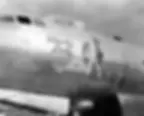The Rise of the Pin-up Girls.
- Margareth
- Mar 30
- 4 min read
Updated: Apr 3
The popular belief is that the first pinup girl appeared during World War II. The truth is the rise of the pinup precedes World War I. An unlikely invention called the bicycle can be credited with the birth of the pinup.

Pin-up girls can be defined as female figures who are alluring but never explicit (as stated by Dian Hanson). Initially, this term described illustrations and paintings of beautiful women in playful and flirty poses, later evolving to include photographs of models and actresses. Pin-ups got their name because, much like their calendar girl predecessors, these images were designed to be pinned up on walls and admired.
Originating from WWII, the pinup girl would become more prevalent in 1950’s art and culture. While most historians credit Esquire for introducing pin-ups to American soldiers and the general public, pin-ups first appeared in Life magazine. They were disseminated to the masses by Life and regional newspapers. Life’s photo articles on Hollywood glamour, “pin-up” artists, its profiles on average men and women, and its penchant for publishing risqué photographs coalesced when it introduced American culture to the pin-up girl on July 7, 1941, in a feature on actress Dorothy Lamour.
Regional newspapers followed suit, expanding the reach of pin-ups. While the “pin-up girl” first appeared in 1941, pin-ups did not become a social phenomenon until mid-1943 when GIs wrote to Life and their hometown newspapers requesting “illustrated” or “Hollywood” pin-up girls and, importantly, pin-ups of “everyday women.” This was a vital shift in pin-up girls that is often glossed over in histories of pin-ups. By the end of 1944, and into 1945, pin-up girls were increasingly represented by the girlfriends, wives, and even children of homesick soldiers needing a boost in morale. “Illustrated” and “Hollywood” pin-ups helped to popularize the initial phase of pin-ups to a general audience. However, everyday women from mid-1943 until the end of the war turned pin-up girls into a social phenomenon.
Pin-up girls illustrators
George Petty's pin-up was mostly featured in magazines called True and Esquire. He created the "Petty Girls" between 1933 and 1956, and their pretty faces became so popular that some were even painted onto military planes during World War II!









Alberto Vargas is one of the most famous names in pin-up art. His "Vargas Girls" graced the pages of Esquire magazine during the 1940s (and later Playboy magazine). They were best known for their sultry poses and ethereal beauty.






From the 1930s to the 1970s, Gil Elvgren created some of the most iconic pin-up girls. Their style was characterised by their playful, flirtatious and sometimes funny poses which added to their charm. Elvgren loved using vibrant colours and lifelike detail to bring his girls to life.








During the Second World War, pin-up models became stars of recruitment posters and calendars, and the American military even commissioned artists to create pin-up artwork to boost soldiers' morale.

The girls were drawn in playful military outfits, and copies were sent to thousands of troops stationed at home and overseas. The sauciest drawings decorated barracks, ships, submarines and fighter planes, and some were even taped inside soldiers' helmets!


They were the key to boosting morale. They presented a playful distraction for troops, where adoration for these beautiful women allowed the soldiers to retain a positive outlook. In many ways, pin-up girls symbolised better times to come.

Pin-up models
Betty Grable
A.k.a. the best legs in Hollywood, was a successful actress, singer and dancer in the 1940s. In 1943, her iconic bathing suit poster made her the most famous pin-up girl of the World War II era.

Bettie Page
After the end of WWII in 1945, Bettie Page became the most famous pin-up and the first to transition from illustrations to photography. Her pictures were published in countless magazines and calendars, becoming the most photographed and collected pin-up girl in history.

Dorothy Dandridge
Between the late 1940s and early 1950s, Dorothy Dandridge became a stunning symbol of beauty and talent.

Marilyn Monroe
With her blonde curls and girl-next-door charm, Marilyn Monroe was a familiar face in magazines, calendars and posters throughout the 50s and early 60s. She became a timeless pin-up icon and this paved the way for her Hollywood stardom.

Jayne Mansfield
In the 1950s she was known as the naughtier version of Marilyn Monroe. Monroe disliked Mansfield's imitation, calling it "gross" and "vulgar." Nonetheless, Mansfield's bold style made her a memorable pin-up icon.

Sources


